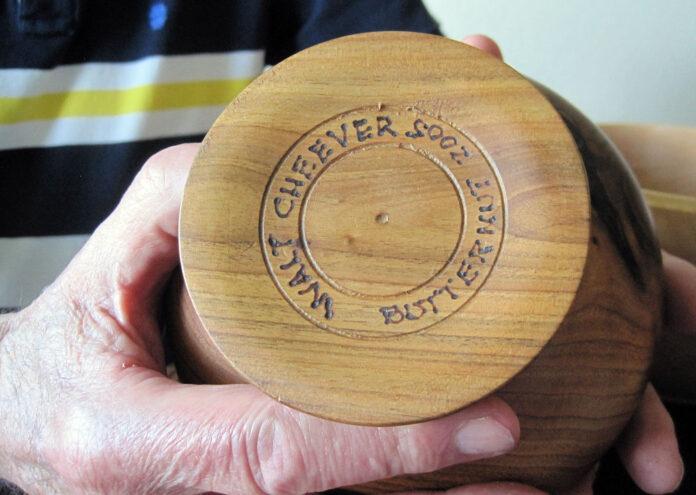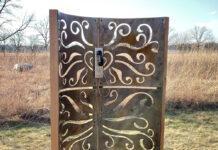“When you feel the inside of a wooden bowl, if it’s as smooth as the outside, then it’s been well made,” said Lois Cheever, holding one of the bowls her husband, Walt, has made. A red sticker on the bottom of the bowl indicates it is one of the 40-or-so bowls that she keeps for the frequently changing display in their home.
Walt crafted each bowl to perfection with the patience he developed over 18 years of woodworking. People may admire the outside curve of the bowl, he said, “but it’s harder to finish the inside.” He should know. He has made about 100 bowls over the past 18 years. The smallest is a small goblet, about two inches high and two inches in diameter; the largest is 13 inches in diameter and eight inches high.
“I used to get my wood from neighbors or friends, cutting down a tree or trimming a tree,” Walt said. “It was all wet wood, so I had to go through the process of cutting the wood the approximate shape I wanted it and letting it dry for several months. The thing I like is to find and use the flaws, giving the piece character.” He has some wood on hand but is always looking for more.
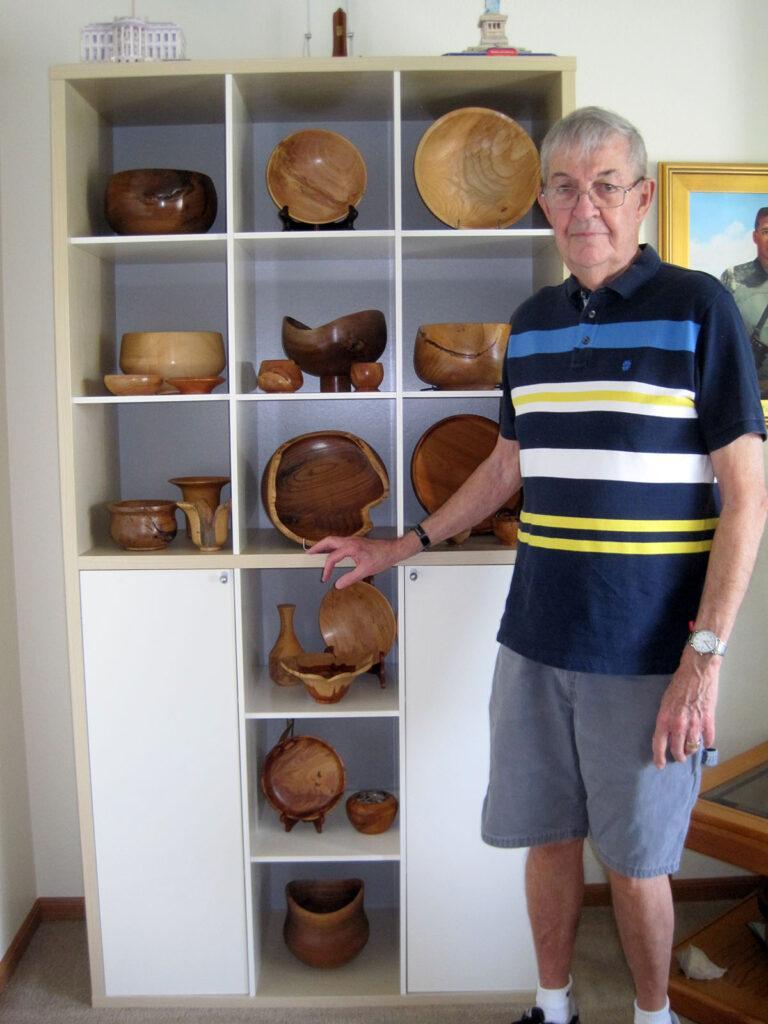
Process
After the wood has dried, the cutting and shaping begin. Walt first uses a chain saw and then a lathe. He explained, “While drying, the bowl will warp, so I have to leave enough wood so I can use a sharp chisel on it. Then the process becomes a fairly slow one. I get it as good as I can with a chisel and then apply sandpaper on a lathe. Then, I like to use shellac on the finish. It’s good protection and attractive.”
When you feel the inside of a wooden bowl, if it’s as smooth as the outside, then it’s been well made.
Lois Cheever
One particular pattern—showing a “branding iron” of a bonsai tree—has special meaning to Walt. His late son, Robert, had given his father a branding iron with a reduced image of a bonsai tree on it. The brand, now almost a Cheever trademark, appears on about half of the pieces Walt makes.
Like Walt, many may remember taking shop class and making something from wood—a doorstop, a letter holder, etc. The first wooden piece Walt created was a pencil holder, which he made in his father’s basement shop in Brookings, S.D. Walt gave it to his mother as a Christmas present, and in one of her moves a half century later, he rescued it from her desk, where it still contained pencils.
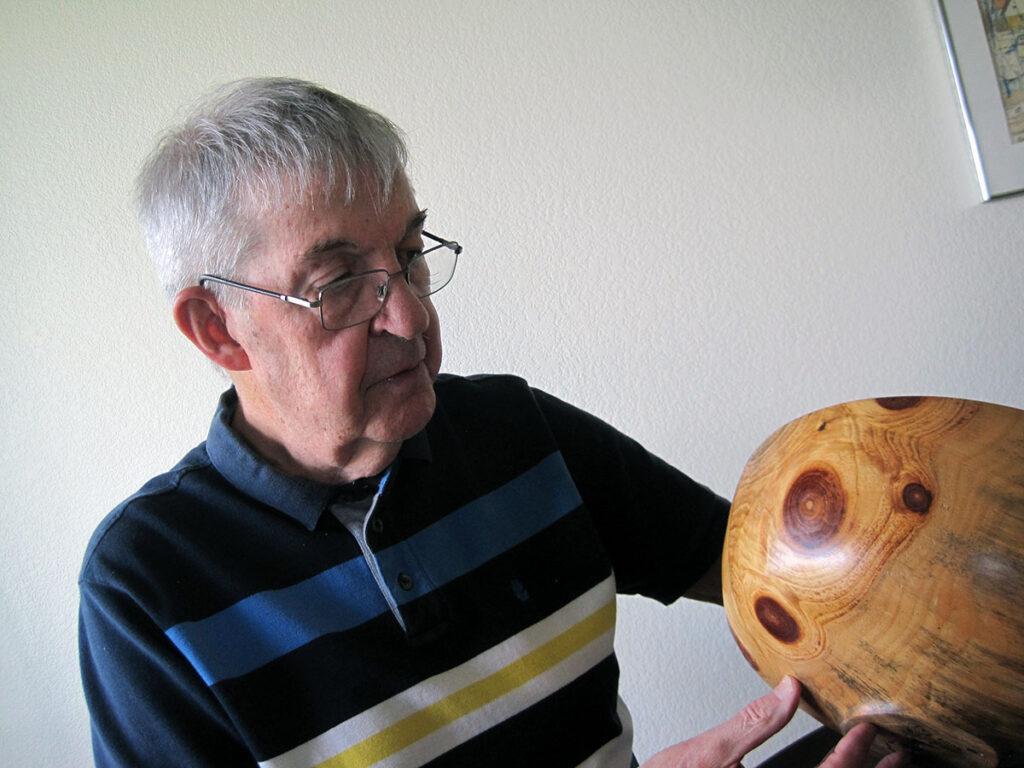
A change in direction
Walt’s creativity took him in a different direction after he graduated from high school. He attended the Massachusetts Institute of Technology on a National Merit Scholarship, where he studied architecture. After earning a Bachelor of Architecture degree, he worked first in Sioux Falls, S.D. and then Chapel Hill, N.C. Returning to the Upper Midwest, he was a practicing architect in Mankato until 1989. He designed a variety of buildings, including the Fine Arts Building and the seminary on the Bethany Lutheran College campus, as well as the St. Peter High School theater and the school swimming pool. He also designed multi-story buildings to hold apartments and businesses in several southcentral Minnesota communities.
When Walt designed Bethany’s Fine Arts Building, he didn’t realize he was setting the stage for a momentous event in his life—his 1991 marriage to Lois in the choir practice room at Bethany. The couple met in the early 1980s, when he owned a Mankato architectural firm, but had no copying machine in his office. So, he used the machine in a neighboring office, where Lois Berg was employed. The two hit it off and eventually married.
The thing I like is to find and use the flaws, giving the piece character.
Walt Cheever
In the late 1980s, the construction industry was going through a hard time, with little profit to be made. Walt found that “everyone wanted me to do junk work,” so he gave up his license in 1989 and began teaching full time at South Central Technical College, which brought him a new learning experience.
“When I was an architect designing buildings, I never used a computer,” Walt said. “When I moved into teaching, I had to learn because the students were going to use computers in their work. No one did hand graphics any more—everything was on the computer. Students had to learn to save their work. I got along well with the students and rarely had problems. Almost all of my students graduated and were successful in landing a job in their field.”
Woodworking
After Walt retired from SCTC in 2004, his wood working took center stage. He said, “That’s when I really started pushing myself in the hobby and soon found myself giving away a lot of the bowls. I used to sell them at the art center at South Dakota State University, Brookings, as well as at two locations in St. Peter. Now I sell only by personal contact.”
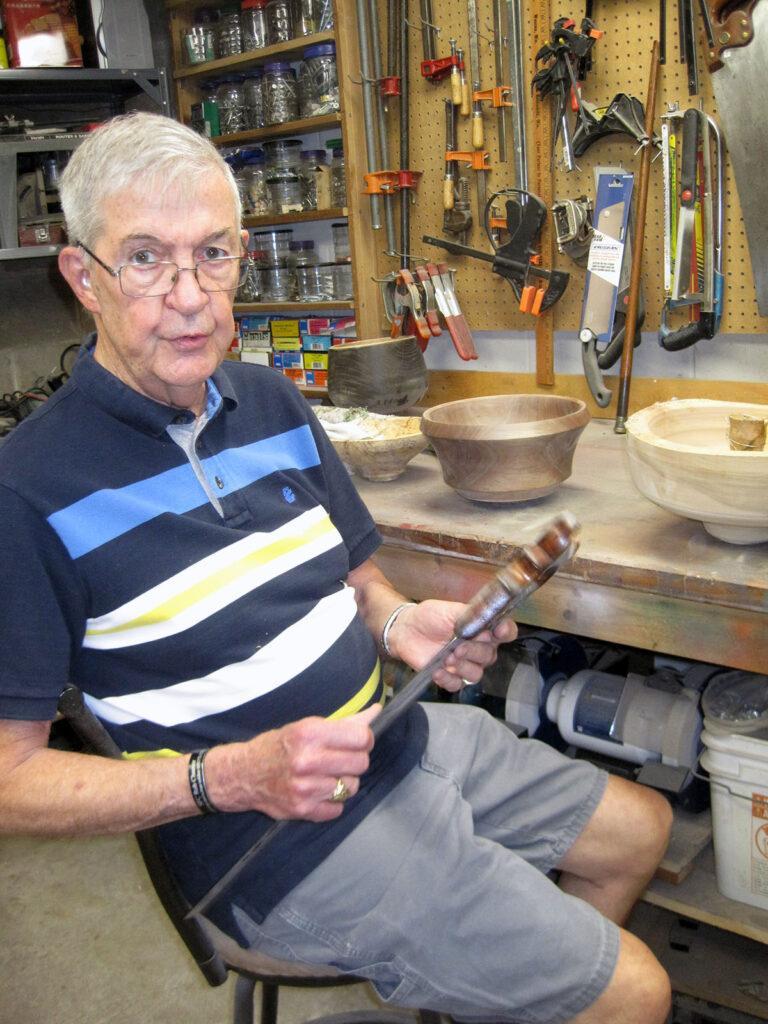
When the Cheevers retired to Willowbrook, a multi-unit residence on Agency Trail in Mankato, Walt brought his woodworking tools along and donated them to the workshop in the building’s garage. Tools include a lathe, an assortment of chisels for use on the lathe and what Walt terms “sanding stuff.” Before using the lathe, residents must get Walt’s permission and demonstrate that they know how to use it safely. There are “locks” on the power tools.
It isn’t only bowls that Walt has turned out. He also has produced a family of woodworkers. All of his grandchildren have had some wood shop experience, including making wooden model cars, not only from kits, but also from scratch.
In his active retirement, Walt stays busy teaching other Willowbrook residents how to use both power tools and hand tools to create whatever they want to make.

